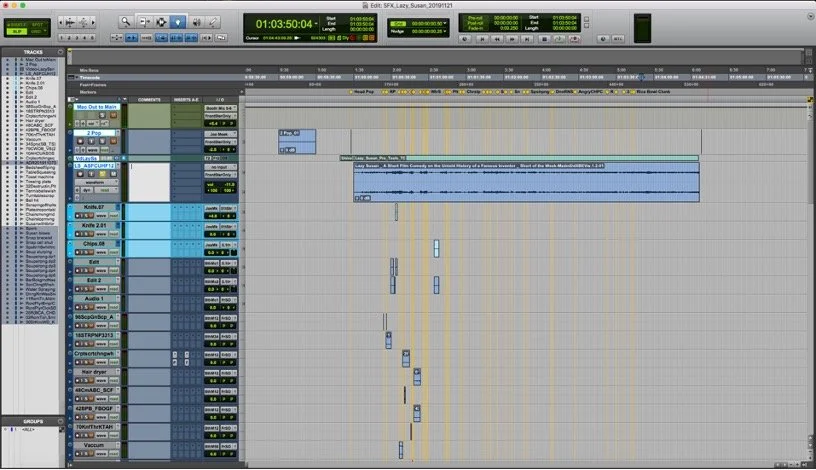Music
After watching the Lazy Susan short a few times, it was decided that the music should have a retro sound as the costuming suggested it took place in the late 1980s or early 1990s. In addition, an observation was made about the use of record players in the film. The circular motion of the record movement along with the unevenness of objects being placed on the record prompted the use of asymmetrical rhythms written in 4/4 times
The use of analog and wavetable synthesized instruments was employed to give a sense of the time period. In addition, a rock drum kit was sent through a reverb plugin that emulates a 1980s vintage reverb.
Ableton Live 10 Suite was used as the DAW for composition as it was the most familiar to the composer and contains many tools that allow one to send control voltages to external analog and digital synthesizers. Specifically, a clock pulse was sent to modules and sequencers so that they could keep the same time as the DAW. This required the use of a digital audio interface that is capable of sending DC-coupled output. Therefore, a MOTU Ultra Lite mk4 18x22 interface was used extensively during this project.
The following external synthesizers and modules were used to create the music:
• Moog Mother 32
• Moog Drummer From Another Mother (DFAM)
• Make Noise Morphagene
• Make Noise DPO (Dual Primary Oscillator)
In addition, an 808 drum kit, a stylized 808 drum kit, a rock drum kit, along with a wavetable synthesizer that was included in Ableton, were used. A patch made using Max was also incorporated as an instrument within Ableton. This patch simulates dial tone sounds and was played rapidly using a probabilistic arpeggiator during Annie’s high-action scenes.
The first task of the composition process was to view the film with no sound in order to get a sense of what tempo was to be used. Once the tempo is decided, it is plugged into Ableton. Afterward, markers were inserted according to the spotting notes. In addition, markers were added to indicate scene changes, fades, and EQ manipulation. This order is imperative as Ableton moves the markers whenever the tempo has been changed.
Afterward, motives and rhythms that define Susan and Annie were created. These motives would define the piece and remain the foundation for other motives created later on during the process. Special care was given to scene changes in order to make sure the transitions were not abrupt or dramatic.


